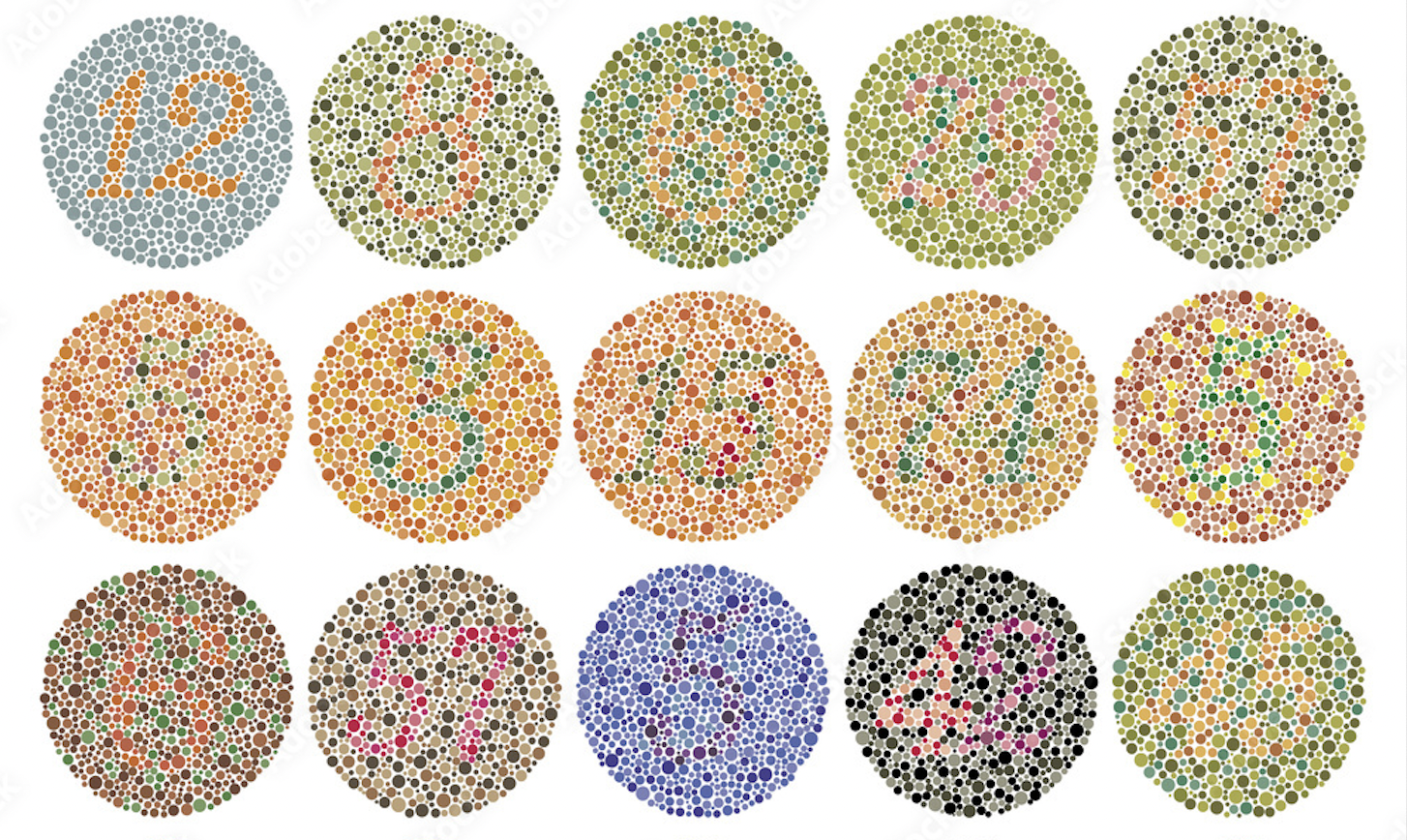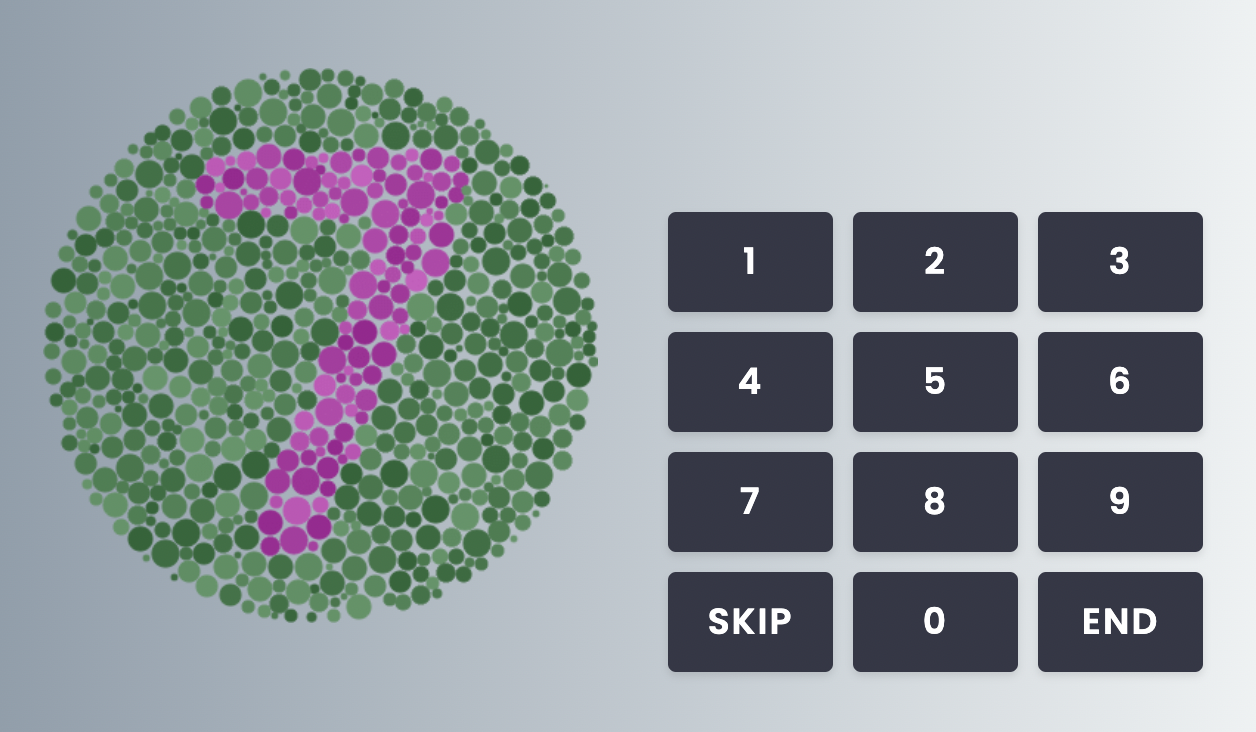Ishihara Test

There are 13 trials in total. The percentage of successful trials will measure your ability to distinguish between red and green. The more correct answers you get, the better color sense you have. After you finish the test, take a look at the below reference table to verify your result.
Try more color vision test
What is Ishihara Test

The origin of the Ishihara Test
The most well-known color blindness test was introduced in 1917 by a doctor with the same name, approximately 100 years ago. Each of his examinations consists of a series of colorful dots on plates, each displaying a number or a path. Since then, this has been the most extensively used color vision deficiency test, and it is currently used by the majority of optometrists and ophthalmologists worldwide.
There are many color blindness tests; however, none are as well-known as the Ishihara plates. It is also common knowledge that even those with normal color vision sometimes struggle with this test. Nonetheless, in the absence of a superior and more economical color vision test, these plates are still in use.
How to do the Ishihara Test:
The goal of the Ishihara test is to properly identify the symbol (typically a number) displayed on the Ishihara test plate. Test plates are made with a specific random dot pattern. The resulting color pattern conceals any color brightness differences that could assist the colorblind in detecting and identifying the number. That implies you can only decipher the symbol hidden in the plate using your color sense.
The way to do the test is quite simple: You will be offered a plate full of small dots with a concealed number inside. Your task is to choose the correct option that you see in the image. You have no more than 3 seconds to give the answer. You can skip if you can’t identify the number; however, it will affect your result directly.

Features
Ishihara is a useful test since desaturated colors cause individuals to become confused in real life. Pink, light green, and grey, for example, are nearly identical to the color blind.
This examination, whether online or on paper, requires specific lighting conditions. For instance, the paper test requires a bright white light, i.e. lighting composed of all colors in equal proportions. It is possible to inadvertently employ room lighting that adds additional blue or yellow to what is visible. Additionally, you are not permitted to wear glasses with colored filter lenses since they can be used to cheat on exams.
Result:
There are 13 trials in total. The percentage of successful trials will measure your ability to distinguish between red and green. The more correct answers you get, the better color sense you have. After you finish the test, take a look at the below reference table to verify your result.









